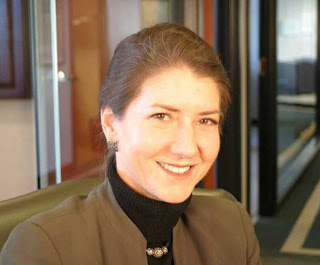 Bill Harding: Some people like fundraising. I'm not
one of them. Running a profitable company for the past year has afforded
me the luxury to wake up every morning and say to my mirror: “What
would you most like to do today, you cunning devil, you?”
Bill Harding: Some people like fundraising. I'm not
one of them. Running a profitable company for the past year has afforded
me the luxury to wake up every morning and say to my mirror: “What
would you most like to do today, you cunning devil, you?”
On an average day, “talk to investors” would fall somewhere in the neighborhood of “take a multivitamin” and “backup my hard drive” on that list. It was something that I knew ought to be done, but being one of the most time-consuming and unpleasant-sounding choices on my list, it didn’t stand a chance competing against 100 exciting ways to build a better product.
At first I felt guilty about this. I take seriously my responsibility to keep Bonanzle as the fastest growing marketplace online, and, knowing that most of our competitors had raised $1 million to $5 million before even launching always gave me the nagging sense that “doing what I most wanted to do” was costing my business growth.

 The National Association of Seed and Venture Funds (NASVF) and the Temple University Fox School of Business announced today that the percentage of venture and angel funds focused on investing in seed stage companies has increased 40% from 2009 based on the second annual survey to its members.
The National Association of Seed and Venture Funds (NASVF) and the Temple University Fox School of Business announced today that the percentage of venture and angel funds focused on investing in seed stage companies has increased 40% from 2009 based on the second annual survey to its members. “The speed of turnaround in the situation is truly impressive. It shows the overall pick-up in the confidence that fund managers seem to have in seed stage companies” said Raj Chaganti, professor in Entrepreneurship and Strategy at the Fox School of Business.
“The speed of turnaround in the situation is truly impressive. It shows the overall pick-up in the confidence that fund managers seem to have in seed stage companies” said Raj Chaganti, professor in Entrepreneurship and Strategy at the Fox School of Business. In the 7 May 2010 issue of Science,
In the 7 May 2010 issue of Science,  Health care and the economy rank among today's most dynamic and important conversations taking place in Iowa and across the nation. While viewpoints vary, in each case Americans are eager for solutions that improve the lives of their families and strengthen their communities. Looking to the future, we all can rally behind a common link that supports recovery from both a wellness and fiscal standpoint: medical innovation.
Health care and the economy rank among today's most dynamic and important conversations taking place in Iowa and across the nation. While viewpoints vary, in each case Americans are eager for solutions that improve the lives of their families and strengthen their communities. Looking to the future, we all can rally behind a common link that supports recovery from both a wellness and fiscal standpoint: medical innovation. Business incorporation has become synonymous with responsible business ownership. Yet, so many misconceptions and rumors exist about the benefits of business incorporation. So it’s no wonder that even the savviest entrepreneurs are at a loss as to whether incorporation is right for them, what it will cost, and where to start.
Business incorporation has become synonymous with responsible business ownership. Yet, so many misconceptions and rumors exist about the benefits of business incorporation. So it’s no wonder that even the savviest entrepreneurs are at a loss as to whether incorporation is right for them, what it will cost, and where to start.
 How do you keep ideas flowing? How do you create a wealth of ideas to choose from? How do you make sure you get to the one killer idea that will make your advert, novel, article or blog post really stand out from the rest?
How do you keep ideas flowing? How do you create a wealth of ideas to choose from? How do you make sure you get to the one killer idea that will make your advert, novel, article or blog post really stand out from the rest?

 Here’s a really terrific
Here’s a really terrific 
 Mark Heesen, who leads the venture industry’s main lobbying group, said today that there have been pluses and minuses about President Obama’s approach to regulation and taxes. Heesen said the federal government is considering some anti-venture legislation, but he sounded pretty confident that most of it won’t get passed.
Mark Heesen, who leads the venture industry’s main lobbying group, said today that there have been pluses and minuses about President Obama’s approach to regulation and taxes. Heesen said the federal government is considering some anti-venture legislation, but he sounded pretty confident that most of it won’t get passed.
 A new program will help Wyoming inventors, entrepreneurs and companies get their ideas into the marketplace, allowing them to create technology and business ideas and then communicate those innovations on a national level.
A new program will help Wyoming inventors, entrepreneurs and companies get their ideas into the marketplace, allowing them to create technology and business ideas and then communicate those innovations on a national level. 50 Fastest-Growing Women Owned Companies Share Key AttributesOn April 28, 2010 the Women Presidents Organization and American Express OPEN announced the winners of the 50 Fastest Growing Women-Owned/Led Companies in North America.
50 Fastest-Growing Women Owned Companies Share Key AttributesOn April 28, 2010 the Women Presidents Organization and American Express OPEN announced the winners of the 50 Fastest Growing Women-Owned/Led Companies in North America. First off, you do not need a PR firm. The retainer is usually not worth it, especially for a young, growing startup because your product is still drastically changing and because your conversion rates are probably very low.
First off, you do not need a PR firm. The retainer is usually not worth it, especially for a young, growing startup because your product is still drastically changing and because your conversion rates are probably very low. Dolphin species on four continents are in danger, warn various reports.
Dolphin species on four continents are in danger, warn various reports.